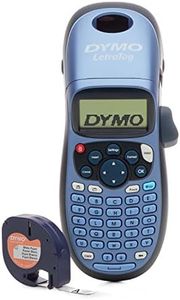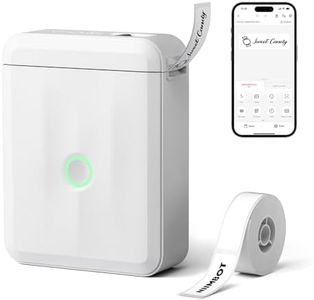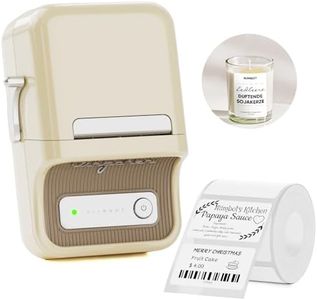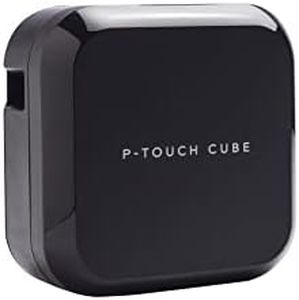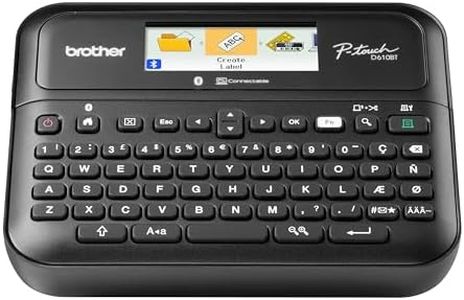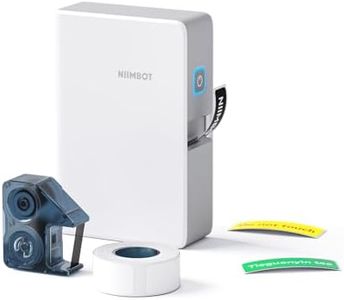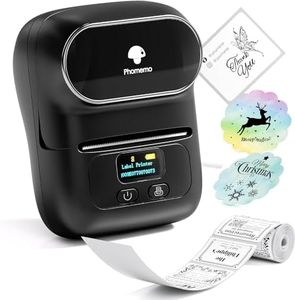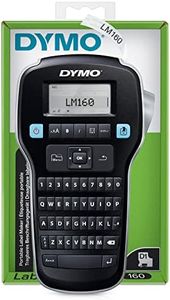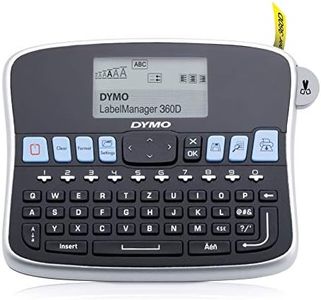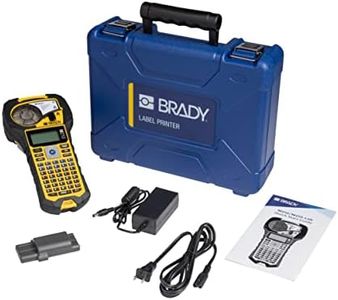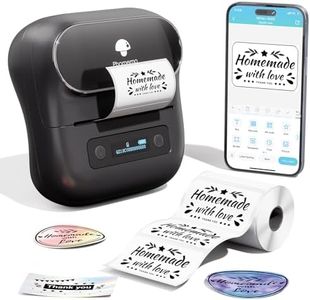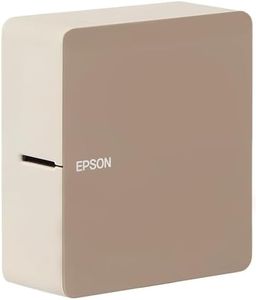We Use CookiesWe use cookies to enhance the security, performance,
functionality and for analytical and promotional activities. By continuing to browse this site you
are agreeing to our privacy policy
10 Best Portable Label Makers
From leading brands and best sellers available on the web.Buying Guide for the Best Portable Label Makers
When choosing a portable label maker, your goal is to find a device that fits your labeling needs, works well in your daily environment, and is easy for you to use. There are many options on the market, so it's important to consider how, where, and how often you plan to use your label maker. Think about the types of items you want to label, whether you need the device to travel with you, and how tech-savvy you are. By understanding the key specifications of these devices, you'll be able to choose one that's well-suited for your personal or professional tasks.Printing TechnologyPrinting technology refers to the way the label maker produces text and images on the labels. Most portable label makers use either thermal printing (which uses heat to transfer ink or darken a special label tape) or less commonly, inkjet technology. Thermal printers are popular because they’re simple, require no ink cartridges, and are typically more dependable for on-the-go use. For general organization tasks, a basic thermal printer is sufficient. If you need labels that can handle more complex designs or colors, you might consider a model with more advanced technology, but for most everyday tasks, thermal is the way to go.
Label Tape CompatibilityLabel tape compatibility is about what sizes and types of label tape the machine can accept. This matters because some projects need wide, permanent stickers, while others call for slim, removable labels. Tapes usually come in different widths, lengths, and materials (such as standard, waterproof, or fabric-friendly). When browsing options, check which tape sizes are supported—typically, portable label makers take tapes ranging from about 6mm to 24mm wide. If you plan to label items of varying sizes or need specialty tapes, choose a model that offers more tape options.
Power SourcePortable label makers are powered by batteries, rechargeable built-in batteries, or sometimes an external power adapter. Battery-powered models are the most flexible, letting you use them anywhere, but you’ll need to keep spare batteries on hand. Rechargeable units can save you money and waste over time but require you to remember to charge them. Consider how mobile you need your label maker to be and how often you'll have access to a power outlet. If you mainly use your label maker at your desk, charging might not be an issue, but if you're on the move, standard batteries could be more convenient.
Keyboard & Input MethodThe way you enter text impacts both your speed and the accuracy of your labels. Some label makers feature built-in QWERTY keyboards, others have ABC layouts, and some rely on connecting to a smartphone app with your device doing the typing. Built-in keyboards allow for rapid label creation without needing extra devices, while app-connected models can be more versatile if you’re comfortable using your phone. Consider what feels most natural for you: if you want to create labels quickly and easily without extra gadgets, go for a built-in keyboard; if you prefer designing on your phone and want more fonts or editing features, an app-based one is a good fit.
Display ScreenThe display screen lets you review your text, check formatting, and see editing options before printing. Some screens are small, showing just one line, while others show multiple lines or even preview the whole label. If you mostly make simple, short labels, a basic screen should be enough. But if you want to adjust fonts, symbols, or create multi-line labels, a larger, clearer screen makes editing much easier and can help avoid mistakes.
Printing Speed & QualityPrinting speed and quality will affect how quickly you can finish a batch of labels and how sharp they look. For occasional home labeling, speed is less critical, but quality matters if you want the text to be readable, neat, or if you’re labeling public-facing items. For office or business use, a faster print speed might be valuable if you’ll be making lots of labels in one go. Higher print resolution offers crisper letters and symbols, which can make your labels look more professional.
Connectivity OptionsThis describes whether the label maker operates as a standalone unit or if it can connect to other devices like your smartphone or computer (often via Bluetooth or USB). Standalone models are simpler, great for basic labels, and don’t need other devices or apps. Connected models let you use custom fonts, emojis, or templates, and are handy if you want more design flexibility. If you just want to type and print, stick with standalone; if you value customizability and enjoy using apps, look for models with mobile or PC connectivity.

